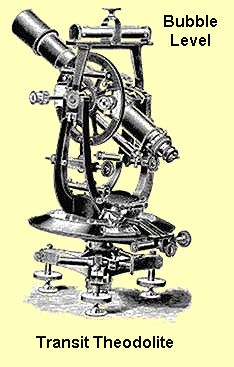




Why Datums Happen
When people first began to map accurately using surveys in an area, they sometimes have the choice to extend some existing survey point set or beginning anew. When there is no land connection between the new and old areas, there was no choice until the advent of satellite surveying they had to begin a new datum. If the old surveys were very far away, a new datum was almost always begun.
Most countries defined their own map reference system – or their datum. This means that at political boundaries the maps would not quite line up. Today there are regional (North American, European) datums as well as global ones. But maps still exist on different datums, sometimes even for the same area.
Relative Errors Dominate
Datums are realized through a set of physical points and the associated coordinates (latitude and longitude) for these “marks”. The relative position between a mark and adjacent or close marks is established using surveying techniques. All accurate surveying consists of making measurements between points – thus the measurements are relative, not absolute. (Celestial navigation gives absolute locations, but it is more inaccurate.)
Errors build up as a network of points is extended. The errors are largest where the area is mountainous. This occurs both because surveying is difficult there, but also because the mountains cause minor changes in the gravity field of the earth.

The surveyor uses gravity to define up, and hence the horizontal. With small changes in gravity this is in error. These errors accumulate.
Datums and More Datums
Occasionally when new survey techniques come along the networks are re-surveyed. A new datum is thus produced. It usually consists of the same physical marks, but new coordinates. For example there was a major adjustment of the survey data in North America during the 1920's. These efforts lead to the publishing of the North American Datum of 1927. Satellite surveying and electronic distance measuring equipment pointed out the distortions in this datum. A new datum based on new measurement was published – the North American Datum of 1983. These are often called NAD 27 and NAD 83 respectively.
|
|
||||
|
|
|
|
|
|